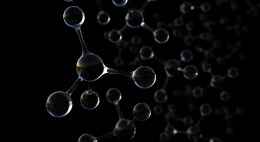
- Chemical Family:Phenols & Phenolics
- Functions:Primary Antioxidant
- Compatible Polymers & Resins:Polyesters, Polyamides, Polyurethanes (PU), Polybutadienes, Polyethylenes (PE), Styrene Copolymers, Polyvinyl Chloride (PVC), Polypropylenes (PP)
- Features:Good Thermal Stability, Excellent Dielectric Properties, Excellent Compatibility, Excellent Processing Stability, Low Water Carryover, Extraction Resistant, Free Flowing, Odorless
- End Uses:Cables, Wires, Pipes
- Synonyms:1,3,5-Dimethyl-2,4,6-tris(3,5-tert-butyl-4-hydroxybenzyl)benzene, 1,3,5-Trimethyl-2,4,6-tri(3,5-di-tert-butyl-4-hydroxybenzyl)benzene, 1,3,5-Trimethyl-2,4,6-tris(3,5-di-t-butyl-4-hydroxybenzyl)benzene, 1,3,5-Trimethyl-2,4,6-tris(3,5-di-tert-butyl-4-hydroxytolyl)benzene, 1,3,5-Trimethyl-2,4,6-tris(3′,5′-di-tert-butyl-4′-hydroxybenzyl)benzene, 1,3,5-Trimethyl-2,4,6-tris(4-hydroxy-3,5-di-tert-butylbenzyl)benzene, 1,3,5-Tris(3,5-di-tert-butyl-4-hydroxybenzyl)-2,4,6-trimethylbenzene, 1,3,5-Tris(3,5-di-tert-butyl-4-hydroxyphenylmethyl)-2,4,6-trimethylbenzene, 1,3,5-Trismethyl-2,4,6-tris(3,5-tert-butyl-4-hydroxybenzyl)benzene, 2,4,6-Bis(4-hydroxy-3,5-di-tert-butylbenzyl)mesitylene, 2,4,6-Tris(3,5-di-tert-butyl-4-hydroxybenzyl)mesitylene, 2,4,6-Tris(3′,5′-di-tert-butyl-4′-hydroxybenzyl)mesitylene, 2,4,6-Tris(4-hydroxy-3,5-di-tert-butylbenzyl)-1,3,5-trimethylbenzene, 2,4,6-Tris(4-hydroxy-3,5-di-tert-butylbenzyl)mesitylene, 3,3′,3′′,5,5′,5′′-Hexa-tert-butyl-α,α′,α′′-(mesitylene-2,4,6-triyl)tri-p-cresol, 4,4′,4′′-[(2,4,6-Trimethyl-1,3,5-benzenetriyl)tris(methylene)]tris[2,6-bis(1,1-dimethylethyl)phenol, NSC 85846
PUREstab 1330 is a sterically hindered phenolic antioxidant, used: - in polyolefins e.g. polyethylene, polypropylene, polybutene for the stabilization of pipes, molded articles, wires and cables, dielectric films. - in engineering plastics like linear polyesters, polyamides, and styrene homo and copolymers. - in PVC, polyurethanes, elastomers, adhesives, and other organic substrates.





































































